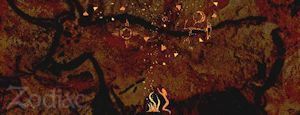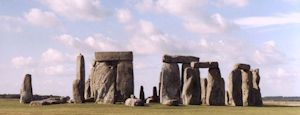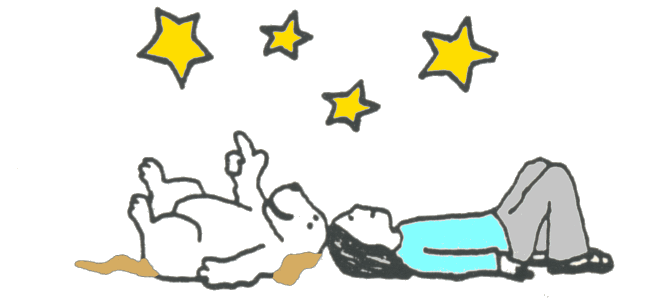 The constellation of Andromeda represents a princess. One day her mother Cassiopeia decided that to save the town she would have to feed the lovely princess to Cetus, a hideous squiddly sea creature also known as the Kraken. That’s just how things were done in those days. It paid to have a few spare daughters around. So Andromeda was chained to a rock where the Kraken couldn’t miss her, presented right out front by the boat docks, with a big sign that said “Take the girl, leave us alone.”
The constellation of Andromeda represents a princess. One day her mother Cassiopeia decided that to save the town she would have to feed the lovely princess to Cetus, a hideous squiddly sea creature also known as the Kraken. That’s just how things were done in those days. It paid to have a few spare daughters around. So Andromeda was chained to a rock where the Kraken couldn’t miss her, presented right out front by the boat docks, with a big sign that said “Take the girl, leave us alone.”
The princess had a boyfriend named Agenor who was kind of lame as far as boyfriends go. He didn’t pay enough attention to her and preferred instead to hang out with his men. Agenor and the boys were always traveling to faraway places where they would wrassle with each other and compare their swords.
It was all arranged for Andromeda to marry Agenor but then she met Perseus who was totally buff and she would go all weak-kneed and say silly things when he came around like “Oh mighty powerful, will you open this jar for me?” But he was a klutz and would drop the jar. Luckily for Perseus, Zeus was always watching over him and doing little things to help him out like giving him a flying horse, or magically repairing jars.
 Flying around on Pegasus is actually how the famous couple met. Perseus looked down below and saw Andromeda chained to the rock and about to be sacrificed to you-know-who. Perseus swooped down to the castle and offered to kill the Kraken in exchange for Andromeda’s hand in marriage. Queen Cassiopeia and King Cepheus saw no downside to the deal, get rid of a monster and a rebellious daughter either way.
Flying around on Pegasus is actually how the famous couple met. Perseus looked down below and saw Andromeda chained to the rock and about to be sacrificed to you-know-who. Perseus swooped down to the castle and offered to kill the Kraken in exchange for Andromeda’s hand in marriage. Queen Cassiopeia and King Cepheus saw no downside to the deal, get rid of a monster and a rebellious daughter either way.
Perseus flew up to the Kraken’s face and said “Hey Cetus, this rescue-the-princess plot-line is old and worn out, like your mom.” Then after a few klutzy miscues, Perseus finally showed the head of one monster (Medusa) to the other monster (Kraken). Medusa’s head was no prettier dead than it was alive, like a combination of slimy snake hair and bad bed-head, especially after bouncing around in a bag on the back of flying horse for a few days. The Kraken turned to stone and sunk into the sea like a squiddly-shaped rock.
And so Perseus and Andromeda became inseparable. Now days we would give them a cutesy couple’s name, Persomeda.
Andromeda is an odd constellation in that she depends heavily on stars in the neighboring constellations for completing her pattern. But she makes up for any cartographic shortcomings by giving us one of the best amateur targets of all time, M31, the Andromeda Galaxy. It’s a big object in a camera. When you photograph M31 and compare it to a pic of the moon taken with the same lens, it appears the width of six full moons. With the naked eye it doesn’t look that big because you only see the inner parts, but on a good night it’s still a fuzzy patch the width of one moon.
You can find M31 with the naked eye, sometimes even under city lights if the transparency of the sky is sufficient. It’s easy, start with the Great Square of Pegasus and hop towards Cassiopeia and then follow those two stars up to those other two stars and follow those up to that other star and then it’s somewhere around there.
The great spiral galaxy in Andromeda is a worthy subject for your first deep-sky astrophoto. With a typical DSLR camera it fits nicely in a 300mm lens. You’ll need a tracking system to account for the spin of the earth during a long exposure, or learn to take lots of short photos and schmoosh them together with software. You have to learn some other stuff, like not bumping the mount with your big stupid feet. Regardless, it’s a bright target as far as these things go.
 A couple of the dwarf galaxies orbiting Andromeda are obvious in a telescope. They are the Messier objects, M32 and M110. I suppose we should probably stop calling the them dwarf galaxies. They’re diameter-impaired is all. They’re mass-challenged. Closer examination reveals a dozen more satellite galaxies swarming around Andromeda. Our own galaxy is thought to be very similar and we are being swarmed by dwarf galaxies too. There is clear evidence that the Milky Way has been eating them, sometimes swallowing them whole and sometimes in chunks.
A couple of the dwarf galaxies orbiting Andromeda are obvious in a telescope. They are the Messier objects, M32 and M110. I suppose we should probably stop calling the them dwarf galaxies. They’re diameter-impaired is all. They’re mass-challenged. Closer examination reveals a dozen more satellite galaxies swarming around Andromeda. Our own galaxy is thought to be very similar and we are being swarmed by dwarf galaxies too. There is clear evidence that the Milky Way has been eating them, sometimes swallowing them whole and sometimes in chunks.
From looking around, it now appears that all large galaxies are simply a combination of smaller galaxies that have come together in the past, and this process is continuing. As time goes on, there are fewer and fewer galaxies in the universe, and of course larger and larger results. The big ones eat the little ones. Andromeda shows signs of indigestion from some of her dietary choices.
Meanwhile our galaxy and Andromeda are speeding towards each other at about 300,000 miles per hour. In 4 billion years the Milky Way and Andromeda will combine into one giant elliptical galaxy weighing a couple of trillion solar masses. Folks are already referring to that monster as “Milkomeda.” Fortunately there is plenty of time to come up with a better name.
Carpe Noctem
















March 4, 2018
Astronomy